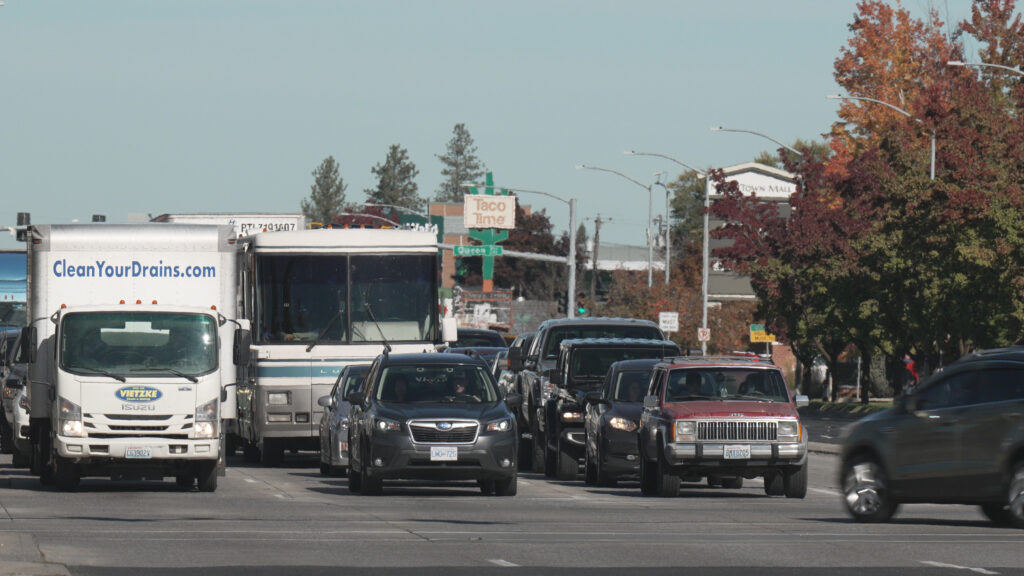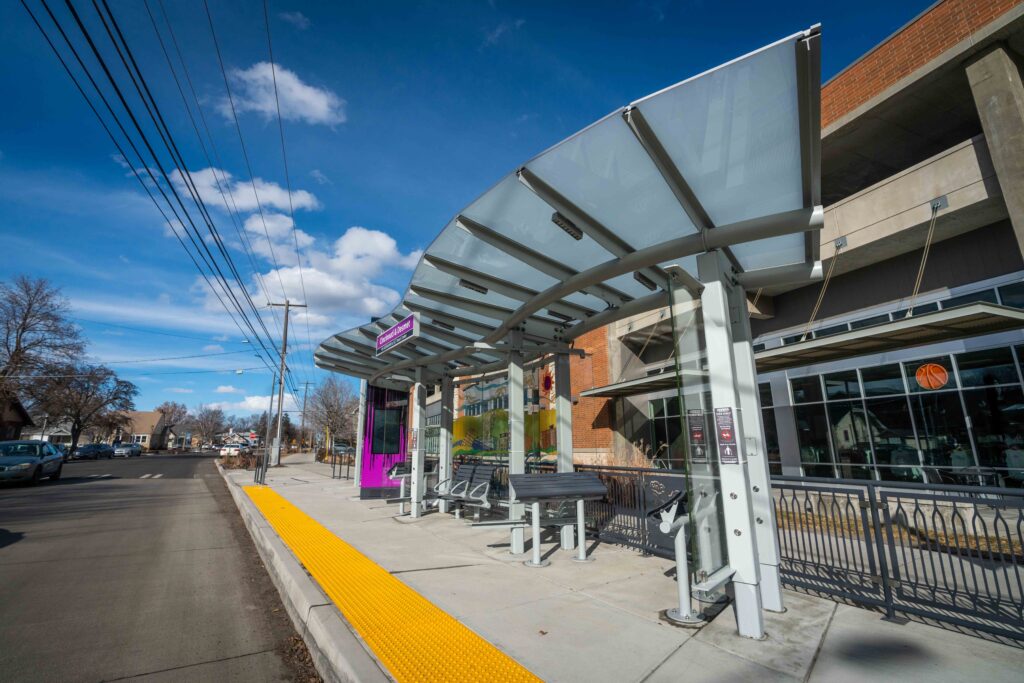Division Street BRT Project Background
Background & DivisionConnects
Division Street is a crucial north-south artery, handling significant traffic and connecting homes, jobs, and services. However, with the North Spokane Corridor (NSC) as the future primary north-south route, changes in traffic patterns are anticipated.
The Spokane Regional Transportation Council and STA, in collaboration with various entities, initiated DivisionConnects in 2019 to reimagine the future of Division Street in light of the NSC. This effort, completed in two phases, led to the development of the Division Street BRT Project and proposed land-use changes to enhance multimodal access and accommodate evolving community needs, supported by a federal grant received in 2022.


Background & DivisionConnects
Division Street is a crucial north-south artery, handling significant traffic and connecting homes, jobs, and services. However, with the North Spokane Corridor (NSC) set to open in 2030 as the primary north-south route, changes in traffic patterns are anticipated.
The Spokane Regional Transportation Council and STA, in collaboration with various entities, initiated DivisionConnects in 2019 to reimagine the future of Division Street in light of the NSC. This effort, completed in two phases, led to the development of the Division Street BRT Project and proposed land-use changes to enhance multimodal access and accommodate evolving community needs, supported by a federal grant received in 2022.

The Corridor
Division Street has been a vital north-south corridor in Spokane County, serving as a route for US 2 and US 395 traffic and freight, connecting I-90 in downtown Spokane to northern Spokane County. It has a rich history, from streetcars in the early 20th century to bus operations. The Division Street BRT project aims to enhance this corridor, with expectations of significant residential and job growth by 2045, transforming it into a vibrant, well-connected area, particularly with the completion of the NSC. The BRT system will play a crucial role in this transformation.

The Corridor
Division Street has been a vital north-south corridor in Spokane County, serving as a route for US 2 and US 395 traffic and freight, connecting I-90 in downtown Spokane to northern Spokane County. It has a rich history, from streetcars in the early 20th century to bus operations. The Division Street BRT project aims to enhance this corridor, with expectations of significant residential and job growth by 2045, transforming it into a vibrant, well-connected area, particularly with the completion of the NSC. The BRT system will play a crucial role in this transformation.
Project Overview
The Division Street BRT project will be the second BRT line in the region, extending from downtown Spokane along the Division Street corridor for approximately ten miles to the Mead area. The main purpose of the project is to deliver high-quality, fast, and frequent bus service in a revitalized and vibrant Division Street corridor.
Key features will include:
- Frequent service with buses coming every 15 minutes or better on weekdays to reduce wait times
- Zero-emission, 60-foot buses
- Proposed 23 BRT station pairings with improved waiting areas and access to surrounding medical, educational, shopping, employment, and residential destinations
- Business Access and Transit (BAT) lanes for approximately five miles between North River Drive and the North Division “Y,” where US 2 and US 395 divide, to improve travel times for buses and local access to destinations along the BRT line
- Improvements for speed and reliability, such as off-board fare payment, signal priority, alldoor boarding, and near-level platforms
- Pedestrian and bike improvements that provide direct access between transit access and end destinations
- Coordination with other supporting efforts to create compact, mixed-use communities near transit where people enjoy easy access to jobs and services, and safe and connected pedestrian and bicycle environments to and around stations.



Project Overview
The Division Street BRT project will be the second BRT line in the region, extending from downtown Spokane along the Division Street corridor for approximately ten miles to the Mead area. The main purpose of the project is to deliver high-quality, fast, and frequent bus service in a revitalized and vibrant Division Street corridor.
Key features will include:
- Frequent service with buses coming every 10 minutes or better on weekdays to reduce wait times
- Zero-emission, 60-foot buses
- Proposed 23 BRT station pairings with improved waiting areas and access to surrounding medical, educational, shopping, employment, and residential destinations
- Business Access and Transit (BAT) lanes for approximately five miles between North River Drive and the North Division “Y,” where US 2 and US 395 divide, to improve travel times for buses and local access to destinations along the BRT line
- Improvements for speed and reliability, such as off-board fare payment, signal priority, alldoor boarding, and near-level platforms
- Pedestrian and bike improvements that provide direct access between transit access and end destinations
- Coordination with other supporting efforts to create compact, mixed-use communities near transit where people enjoy easy access to jobs and services, and safe and connected pedestrian and bicycle environments to and around stations.
Funding Sources
Funding secured: $51 million
Federal: Congestion Mitigation and Air Quality (CMAQ) grant: $1 million
State: Move Ahead WA: $50 million
